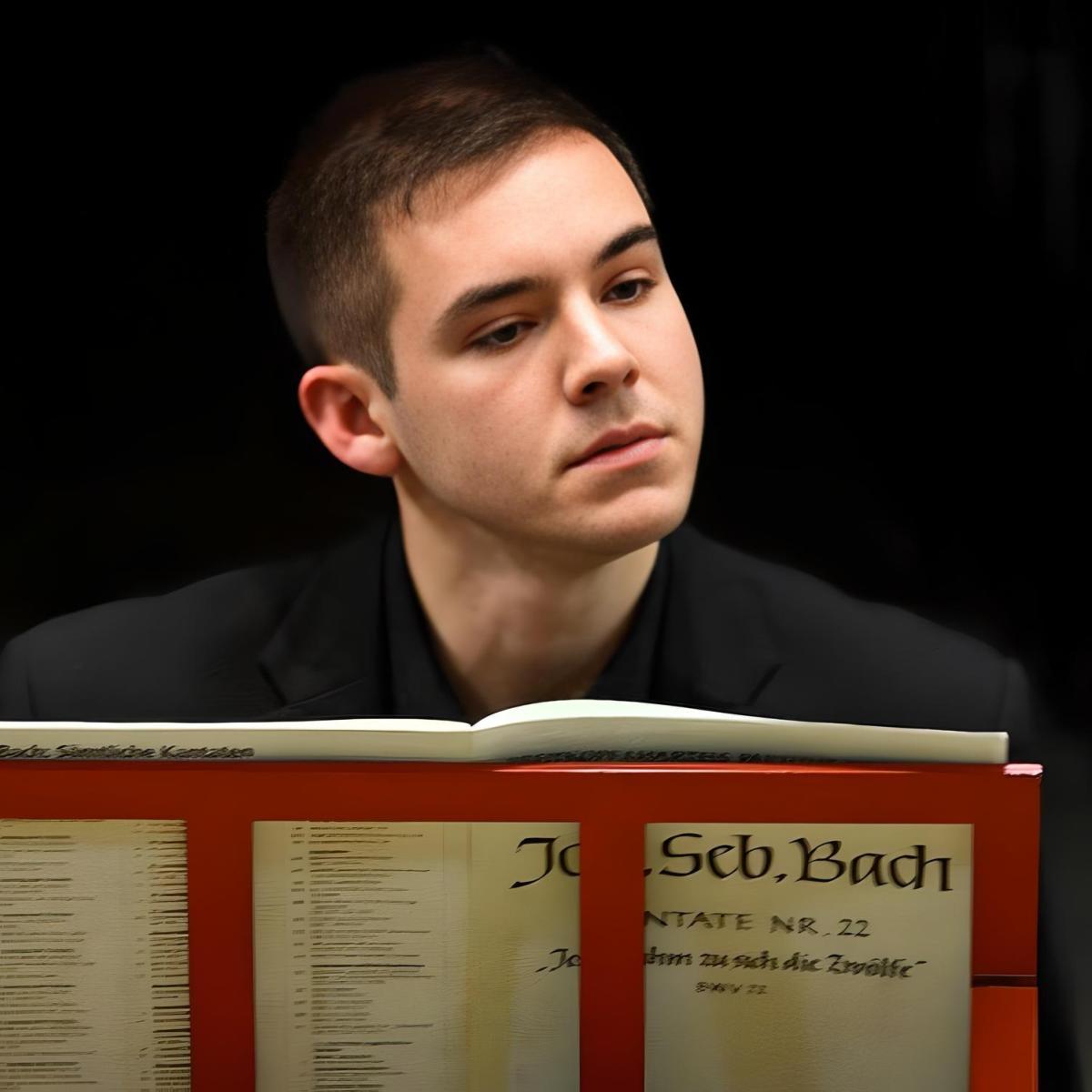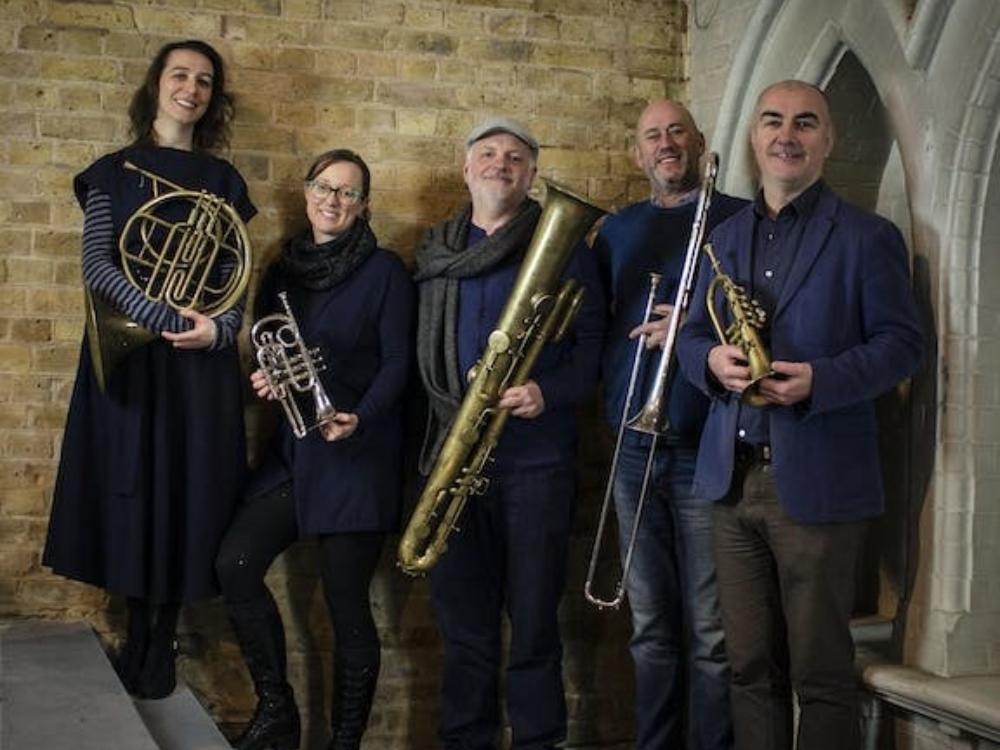Essay
The celebrated Distins
How one family revolutionised the way music spread
Share this

Those of us who came of age during the latter decades of the last century will surely remember the Jacksons - especially the young Michael - or the Bee Gees (i.e. the “Brothers Gibb”) - or going back a little further, the Osmonds or the Andrews Sisters. We might also fondly remember the Von Trapp family as portrayed in The Sound of Music. All of these musical families were, indeed still are, famous and performing sensations.
But this isn’t a purely recent phenomenon! One musical family from centuries past was very much the Jacksons, Osmonds, Bee Gees, or Von Trapps of their age - and while you may not remember them today, we’ll seek to remedy that in the following paragraphs.
This family, then, were the celebrated Distin family, and Continuo Connect were fortunate to learn about them from none other than Anneke Scott of The Prince Regent’s Band, who together have explored the repertoire and concerts pioneered by the Distins.

The Distin family - while they may be an unfamiliar name - certainly left their mark on today’s musical world, in the form of almost every brass instrument, community brass bands, and the brass band competition scene.
Like Anneke’s Prince Regent’s Band, the Distin family performed as a brass quintet. But when they first started (the Distins, that is!) brass instruments either used keys or slides to change notes. Thanks to the innovations of Adolphe Sax, valves were deployed instead, enabling brass instruments to become both more practical and affordable, and therefore popular. It was hotly debated whether Sax’s patented “saxhorn” was a fundamentally new instrument or merely a development of previous instruments (rendering the patent invalid), but however practical, affordable, and desirable saxhorns were, they would be nothing if they hadn’t made it out of Adolphe Sax’s workshop and into the hands of players. Cue the Distin family...
(You may be thinking that Adolphe Sax’s name is familiar - and you may be tempted to confuse the saxhorn with Sax’s other invention, the saxophone - but they are completely different families of instruments! If you can imagine tubas, euphoniums, and similar instruments, of various sizes, in a traditional brass band or marching band: those are saxhorns. The instrument played by Charlie Parker, John Coltrane, Sonny Rollins, and - apocryphally, Bob Holness - is the saxophone.)
The Distins, then, were a five-member family of brass instrument players who made their concert debut in 1837 in Edinburgh. Initially, John Distin played slide trumpet or keyed bugle, and his four teenage sons played three natural horns and a trombone, and they toured extensively into the 1840s. It was while on tour in 1844 that the Distins met Adolphe Sax in Paris - the same year that Sax had introduced his new saxhorn. The Distins adopted the new instruments, and went from strength to strength both musically and financially.

While today a band might sell a few commemorative T-shirts, mugs, or other “merch”, the Distins perfected the idea of selling copies of their own instruments (including saxhorns) to their adoring fans, along with more mundane fare (such as the jug pictured above - now in Anneke Scott's proud possession!). John and his eldest son Henry set up a shop in London in 1845 selling sheet music and instruments - especially saxhorns - and the quintet publicised the complete range of available instruments in their performances. That same year, the Distins performed on silver saxhorns for Queen Victoria and Prince Albert, further cementing their public celebrity.
Later, they sponsored competitions to promote their business. Brass band competitions expanded hugely with the growth of the railways in the 19th century, and music itself became much more accessible to the average worker through brass instruments and bands based around, and sponsored by, the workplace. It was through brass and wind bands that much of orchestral and operatic music spread; while concert halls and opera houses were relatively few and inaccessible to wider public, bands were not. The speed with which music could spread through this extended community was impressive. It was also common practice, for example as described in Trevor Herbert's The British Brass Band: A Musical and Social History (OUP 2000):
British publishers lost no time in making opera extracts available to the wider public ... James Smyth’s brass band arrangement of Verdi’s Forza del Destino was in circulation within a few months of its first performance in St Petersburg in 1862
Many of these bands continue to thrive today, often outliving the original workplaces - the Grimethorpe Colliery Band, the Black Dyke Mills Band, Foden’s Band and Leyland Band (originally vehicle manufacturers), and the Fairey Band (an aircraft manufacturer), are all still drawing crowds. Indeed there are around 1200 brass bands (requiring 30,000 players!) in Britain today - and that’s to say nothing of the popularity of brass / marching bands in the USA, Germany, and elsewhere.
The Distins London shop (“Distin & Sons”), soon followed by a manufacturing business, “Distin & Co” in 1849, grew fast and profitably, and was ultimately sold by Henry in 1868 to another family with perhaps a more familiar name: the Booseys. This business eventually became Boosey & Hawkes in 1930 after a merger with yet another family music business, Hawkes & Son, and is today the largest classical music publisher in the world, although the instrument-making business was sold off in 2003.
While the Distins undoubtedly sold a great many saxhorns, their relationship with Adolphe Sax was stormy. The Distin point of view was that they’d made a poor instrument maker rich and famous; Sax’s point of view was that he’d given the Distins these instruments and made them stars. Sax was notoriously litigious, bankrupting several other makers; but the Distins thrived, and stamped their own name on all their instruments, whether new-fangled saxhorns, other novelties, or more traditional horns, trombones and slide-trumpets.
The Prince Regent’s Band was founded in 2014 primarily to celebrate the bicentenary of Adolphe Sax’s birth in 1814. The 200th anniversary was widely celebrated in the worldwide brass community with concerts, conferences, and exhibitions, and Anneke seized the opportunity to explore the original repertoire through a new period instrument band. That’s how she started to explore the work of the Distins, and to understand just how important and widespread their impact had been.

Anneke recalls that it was not easy to work out exactly what the Distins played on their tours, and even with known repertoire it was tricky to understand which member of the band played which part. Given that the Distins were trying to sell instruments, they’d bring the full range with them, and swap around in the concert to allow the public the chance to see everything. The Prince Regent’s Band will also do this, therefore, and they have to spend considerable time workshopping repertoire and creating arrangements to achieve an authentic “Distins” experience. As Anneke describes:
“We’ll often say - ‘this doesn’t work, what if I swap this line with you?’ - and we’ll end up playing on heavily annotated parts. Each player will end up doing something slightly different in terms of transpositions [B flat or E flat instruments, for example] - and helping each other out - ‘this is for you with your shaped thing!’”
Anneke’s imagination has also been seized by the enigmatic figure of Mrs Distin, that is, Ann Matilda, the mother of the family. Ann was herself from another noted family of musicians, the Loders of Somerset, and started her performing career as a dancer. She married Thomas Ridgeway, a pantomime impresario, in 1804 and the marriage led to a family troupe of successful pantomime artists. After Ridgeway’s death in 1829, she married John Distin, but the four sons of the quintet were in fact born out of wedlock - the Ridgeway marriage having broken down from around 1815.
Ann Matilda was a pianist and composer, and in illustrations of the Distins you can sometimes see her sitting behind them at the piano - which sometimes featured in their performances. Their concerts would also feature song: not only did all the male players sing, but they were joined by their youngest sibling Louisa Rose Distin, a soprano, and they toured with a then-famous operatic soprano Rebecca Isaacs (who went by the name of ‘Miss Zuchelli’). Indeed, much of their repertoire included operatic arias and overtures.

Anneke reports that The Prince Regent’s Band draw the line at singing (“we’re not ready to do that yet”, Anneke says), but they have included piano in some of their concerts. However, this raises a particular problem when it comes to historical authenticity...
Brass instruments of the 19th century were not consistently tuned to a specific frequency (today, the pitch A is standardised at 440Hz, allowing musicians everywhere to play in tune with one another). Anneke recounts a famous scandal:
“It was Queen Victoria’s birthday … during the Crimean war, there were dozens of Army bands assembled for a grand parade [attended by Prince George, commander-in-chief of the Army, in Scutari, Turkey], and they combined to play God Save the Queen. On a count of three they started to play, but they were all at different pitches and it was a disaster!”
As a result of this embarrassing cacophony, the Royal Military School of Music was established in 1857 at Kneller Hall to standardise army music. There, professional bandmasters were trained, and as they retired from the Army, they ended up across the country. As Anneke describes, they may have retired, but they didn’t stop working:
“You start to see books and journals - how to do arrangements… in the journals each month there would be, for example, the overture to Nabucco, and instructions on how to arrange it for your band’s instruments”.
The problem for The Prince Regent’s Band, therefore, is how to find a piano (which are now universally tuned to A = 440Hz) to take part in their performances, when their brass instruments are typically tuned to an A of 452Hz!
Piano included, novelty was a big part of what the Distins were trying to provide (indeed, novelty was the height of fashion in the 19th century). They would constantly launch new instruments, and this too is a source of fascination for Anneke:
“Distin had a walking-stick trumpet at one point - you can imagine audiences wondering what the new ‘latest thing’ would be!”
Anneke and The Prince Regents Band are also keen to seek out an authentic performance in other ways; for example, historical approaches to rubato, and even practical matters such as how the line-up would be arranged on stage.
The legacy of Sax and the Distins is considerable, and it’s therefore fascinating to see a group such as The Prince Regents Band go back to their roots and allow us, today, to appreciate the Jacksons / Osmonds / Bee Gees of the 19th century in authentic form. And you never know - perhaps there is a gap in today’s world of plastic pop for an authentic brass quintet to storm the charts once again!
The Prince Regent's Band's recording, The Celebrated Distin Family is available via Resonus Classics.
Share this
Keep reading

In conversation: Seb Gillot
Seb is a freelance organist, harpsichordist and conductor. He is continually in demand as a continuo player and early keyboard specialist.

Barnstorming!
Barnstorming! was born out of the desire to reconnect with colleagues and audiences during the COVID pandemic. Three concert films were created.

Johann Christoph Pepusch: Chandos Anthems
Johann Christoph Pepusch: Chandos Anthems - a recording by The Harmonious Society of Tickle-Fiddle Gentlemen.

